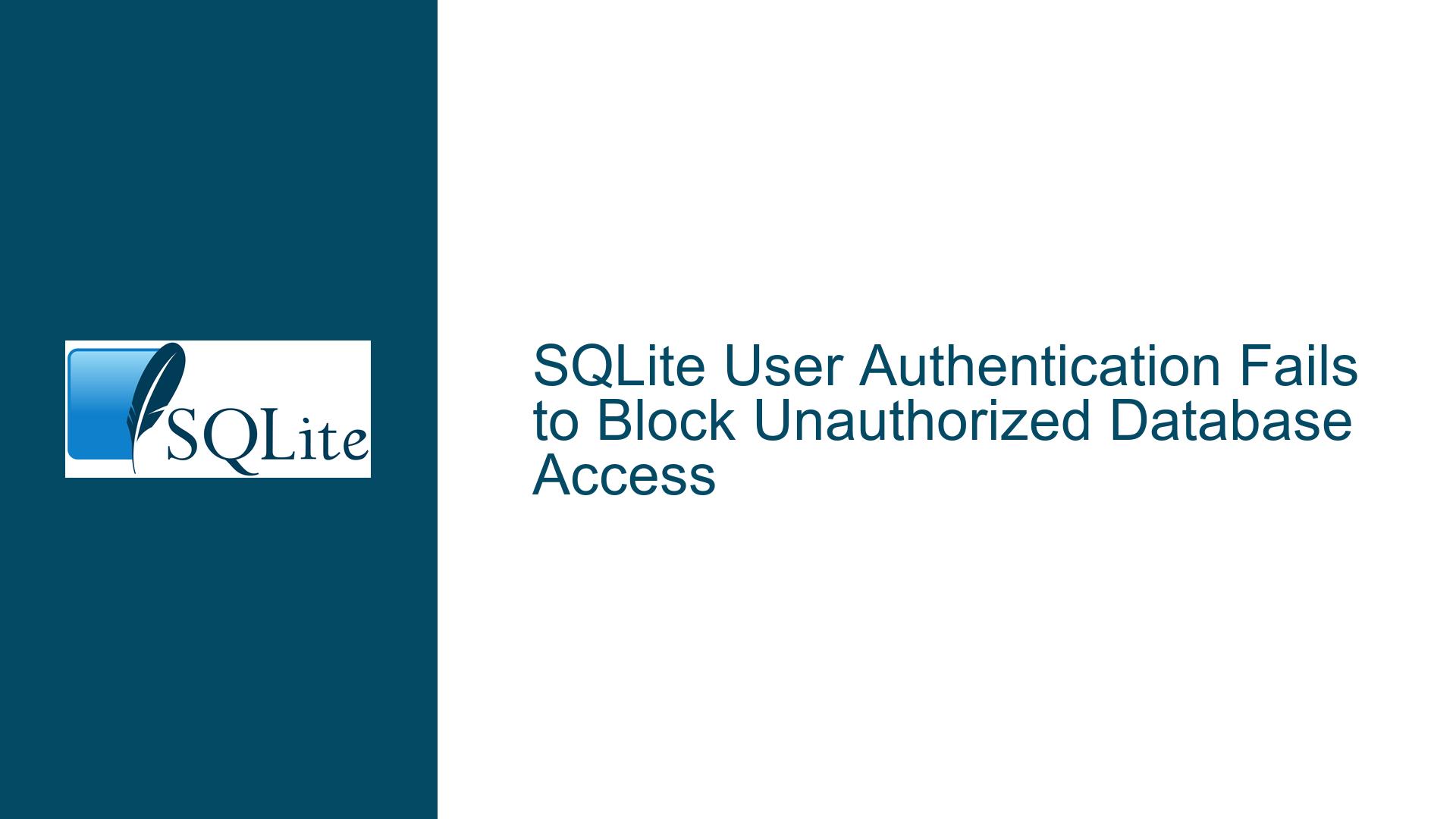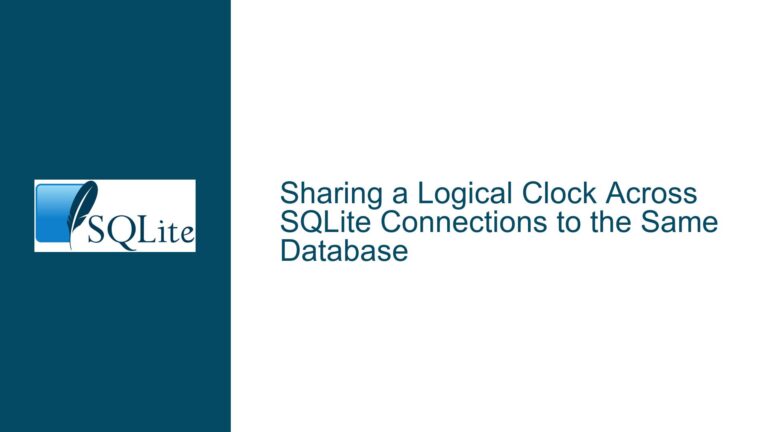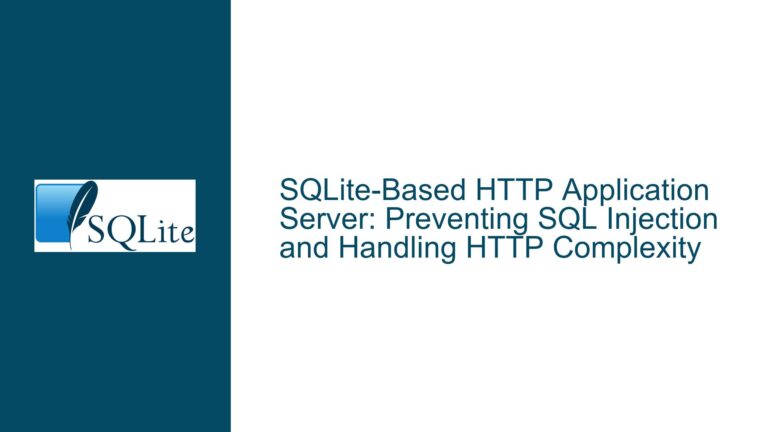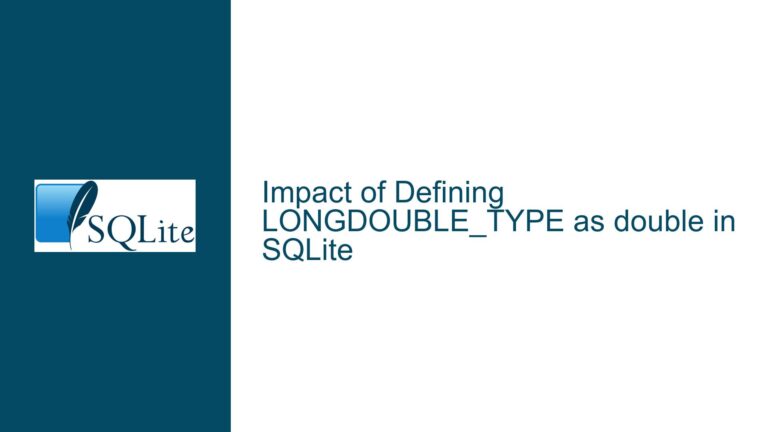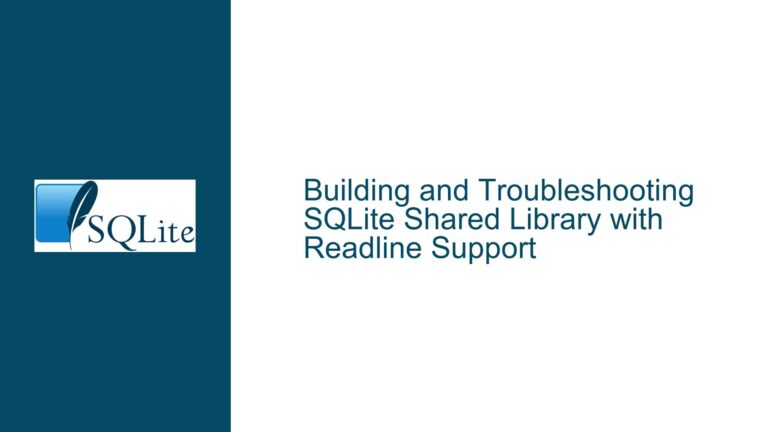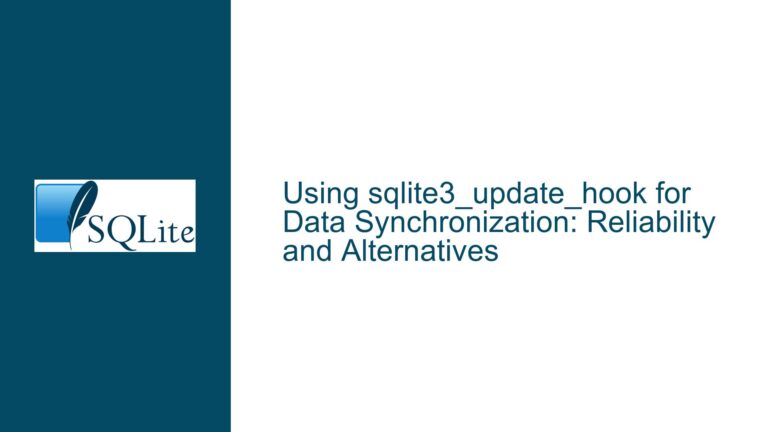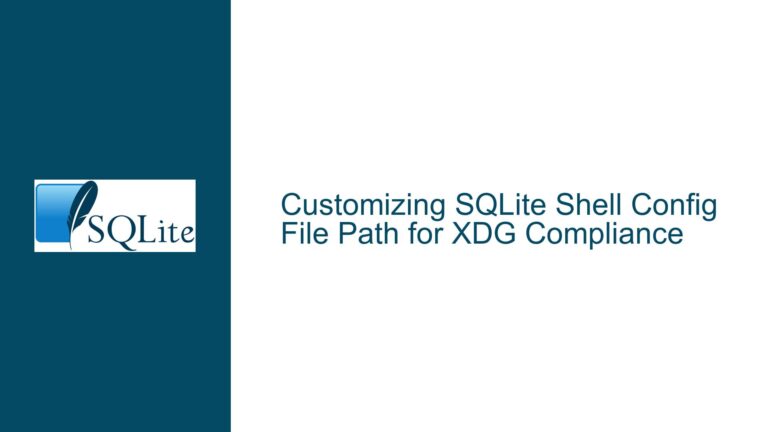SQLite User Authentication Fails to Block Unauthorized Database Access
SQLite User Authentication API Misimplementation and Its Limitations
The core issue revolves around the misimplementation of SQLite’s user authentication API, which fails to block unauthorized access to the database despite returning an error during the authentication process. The user authentication API, as described in the SQLite documentation, is designed to restrict read and write operations if the sqlite3_user_authenticate function returns an error. However, in the provided scenario, the database operations continue to execute even after a failed authentication attempt. This behavior suggests either a misconfiguration in the implementation or a fundamental misunderstanding of the API’s capabilities.
The user authentication API is part of SQLite’s extension mechanism, which allows developers to add custom functionality to the database engine. In this case, the API is intended to provide a layer of security by requiring users to authenticate before performing any database operations. The API includes functions such as sqlite3_user_add, sqlite3_user_authenticate, and sqlite3_user_delete, which are used to manage user accounts and enforce authentication.
The problem arises when the authentication process fails, but the subsequent database operations are not blocked. This indicates that the API is not being used correctly or that there is a deeper issue with how the authentication mechanism is integrated into the application. Additionally, the discussion highlights a secondary issue where the database connection is opened multiple times without being properly closed, leading to potential memory leaks and further complicating the authentication process.
Interrupted Authentication Flow and Multiple Database Connections
One of the primary causes of the issue is the interrupted authentication flow. The code provided in the discussion does not halt the execution of the program when the authentication fails. Instead, it merely logs the error and continues with the database operations. This behavior is contrary to the intended use of the user authentication API, which is designed to block access to the database if the authentication process fails.
The code snippet below illustrates the problematic section:
rc = sqlite3_user_authenticate(db, usrName, "1112", 4);
if(rc!=SQLITE_OK)
fprintf(stderr, "Error authenticate %s\n", sqlite3_errmsg(db));
else
fprintf(stdout, "user authorized\n");
In this code, the program checks the return value of sqlite3_user_authenticate but does not exit or block further database operations if the authentication fails. This allows the program to continue executing, even though the user has not been properly authenticated.
Another significant issue is the repeated opening of the database connection. The code opens the database connection twice using sqlite3_open_v2 and sqlite3_open without closing the connection in between. This can lead to memory leaks and other undefined behavior, as the database handle is not properly managed. The correct approach would be to open the database connection once at the start of the application and close it once at the end, ensuring that all operations are performed within a single session.
Implementing Proper Authentication Flow and Database Encryption
To address the issues identified, it is essential to implement a proper authentication flow that halts the program if the authentication fails. This can be achieved by modifying the code to exit or return from the function if the sqlite3_user_authenticate function returns an error. The following code demonstrates the corrected approach:
rc = sqlite3_user_authenticate(db, usrName, "1112", 4);
if(rc!=SQLITE_OK) {
fprintf(stderr, "Error authenticate %s\n", sqlite3_errmsg(db));
sqlite3_close(db);
return rc; // Exit the function if authentication fails
} else {
fprintf(stdout, "user authorized\n");
}
In this revised code, the program will exit the function and close the database connection if the authentication fails, preventing any further database operations from being executed.
However, even with this correction, the user authentication API has limitations. As pointed out in the discussion, the API does not provide a robust security mechanism that can prevent unauthorized access to the database outside of the application. For example, if someone gains access to the database file directly, they can use the SQLite shell or another application to read or modify the data without going through the authentication process.
To address this limitation, it is necessary to consider additional security measures, such as database encryption. SQLite offers an encryption option through the SQLite Encryption Extension (SEE), which requires a license fee. SEE provides a way to encrypt the entire database file, making it unreadable without the correct encryption key. This ensures that even if someone gains access to the database file, they cannot read or modify the data without the key.
Another approach is to control access to the database at the server level. By placing the database on a server that enforces access controls, you can ensure that all database operations go through the application, which can enforce the necessary authentication and authorization checks. This approach is commonly used in web applications, where the database is hosted on a server, and access is controlled through the application’s front-end.
In summary, the issues with SQLite user authentication can be addressed by implementing a proper authentication flow that halts the program if authentication fails and by considering additional security measures such as database encryption or server-level access controls. These steps will help ensure that the database is protected from unauthorized access, both within and outside the application.
